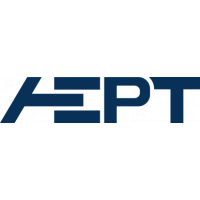Atmospheric pressure capacitively coupled radio frequency discharges operated in He/N2 mixtures and driven by tailored voltage waveforms are investigated experimentally using a COST microplasma reference jet and by means of kinetic simulations as a function of the reactive gas admixture and the number of consecutive harmonics used to drive the plasma. Pulse-type ‘peaks’-waveforms, that consist of up to four consecutive harmonics of the fundamental frequency (f_0=13.56MHz), are used at a fixed peak-to-peak voltage of 400V. Based on an excellent agreement between experimental and simulation results with respect to the DC self-bias and the spatio-temporal electron impact excitation dynamics,we demonstrate that Voltage Waveform Tailoring allows for the control of the dynamics of energetic electrons, the electron energy distribution function in distinct spatio-temporal regions of interest, and, thus, the generation of atomic nitrogen as well as helium metastables, which are highly relevant for a variety of technological and biomedical applications. By tuning the number of driving frequencies and the reactive gas admixture, the generation of these important species can be optimised. The behavior of the DC self-bias, which is different compared to that in low pressure capacitive radio frequency plasmas, is understood based on an analytical model.
| Field | Value |
|---|---|
| Publisher | |
| Authors | |
| Release Date | 2020-09-15 |
| Identifier | 574abb8b-c3c5-4648-9cf7-e1f2dbeeac93 |
| Permanent Identifier (URI) | |
| Plasma Source Name | |
| Plasma Source Application | |
| Plasma Source Specification | |
| Plasma Source Properties | COST-jet, consists of two identical and co-planar parallel electrodes made of stainless steel. The electrode gap is 1 mm. The electrodes are enclosed by two quartz plates confining the plasma volume to 1×1×30 mm3, the frequency and gas flow vary
|
| Language | English (United States) |
| License | |
| Plasma Medium Name | |
| Plasma Medium Properties | The discharge is operated in helium (5.0 purity) with nitrogen (5.0 purity) admixture. The flow rate of helium is fixed at 1000 sccm while the nitrogen flow rate is varied from 0.5 to 4 sccm. This flow rate range of N2 corresponds to reactive gas concentrations between 0.05% and 0.4% in the He buffer gas. The gas pressure inside the jet is estimated to be 1.02(±0.02)×105 Pa. The temperature is roughly room temperature. |
| Contact Name | Ihor Korolov |
| Contact Email | |
| Public Access Level | Public |
| Plasma Diagnostic Name | |
| Funding Agency | |
| Project | |
| Subproject |


![[Open Data]](https://assets.okfn.org/images/ok_buttons/od_80x15_blue.png)